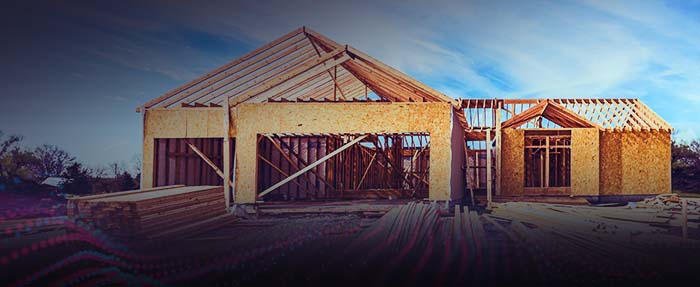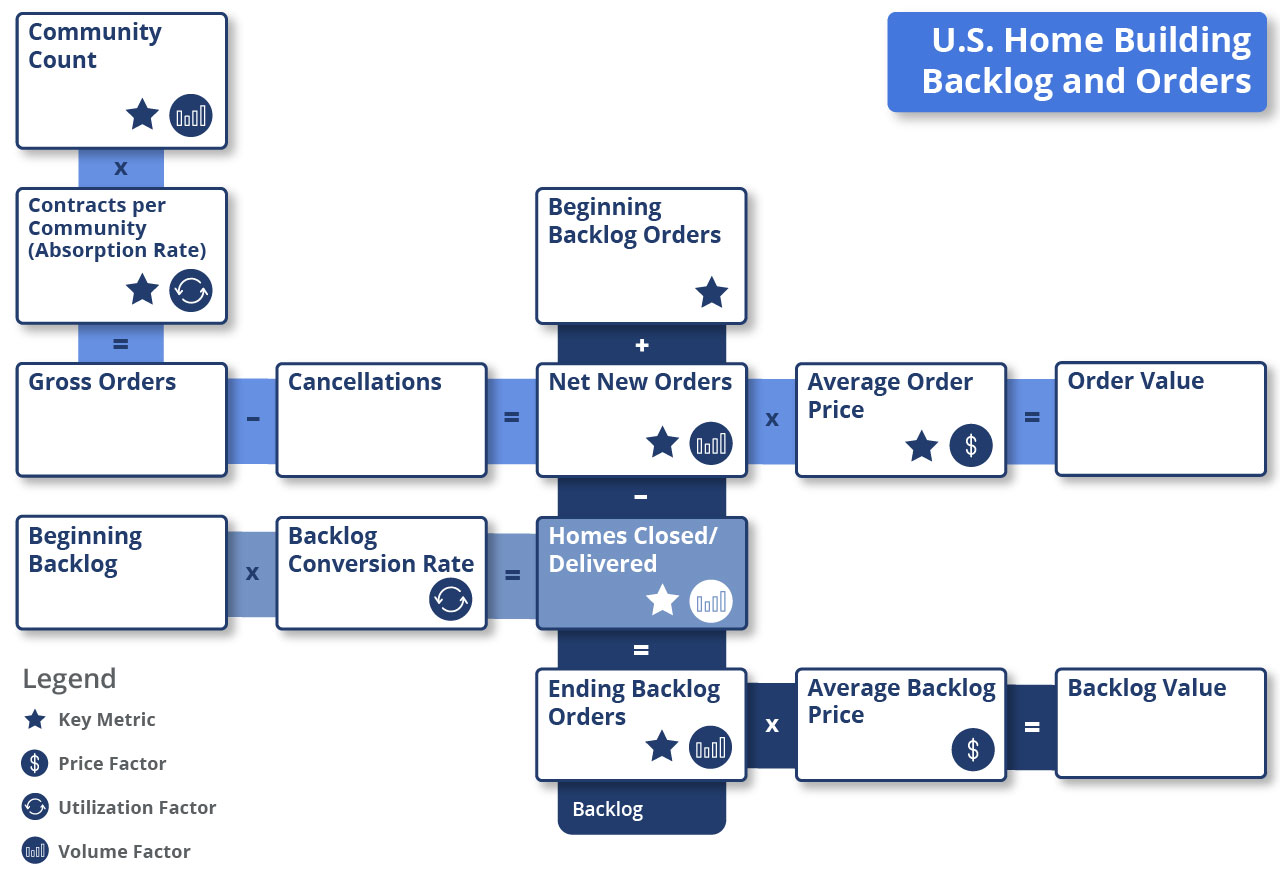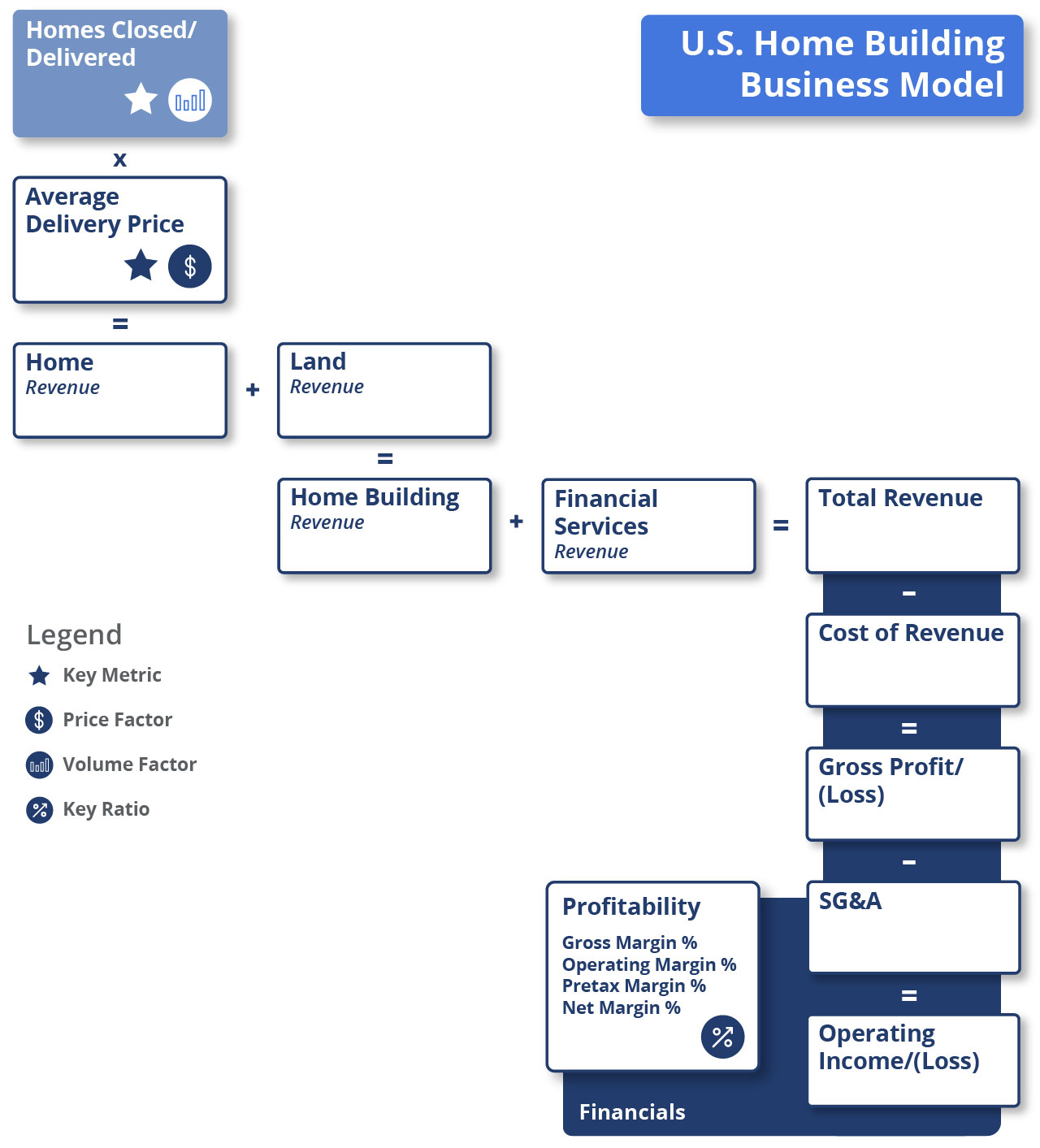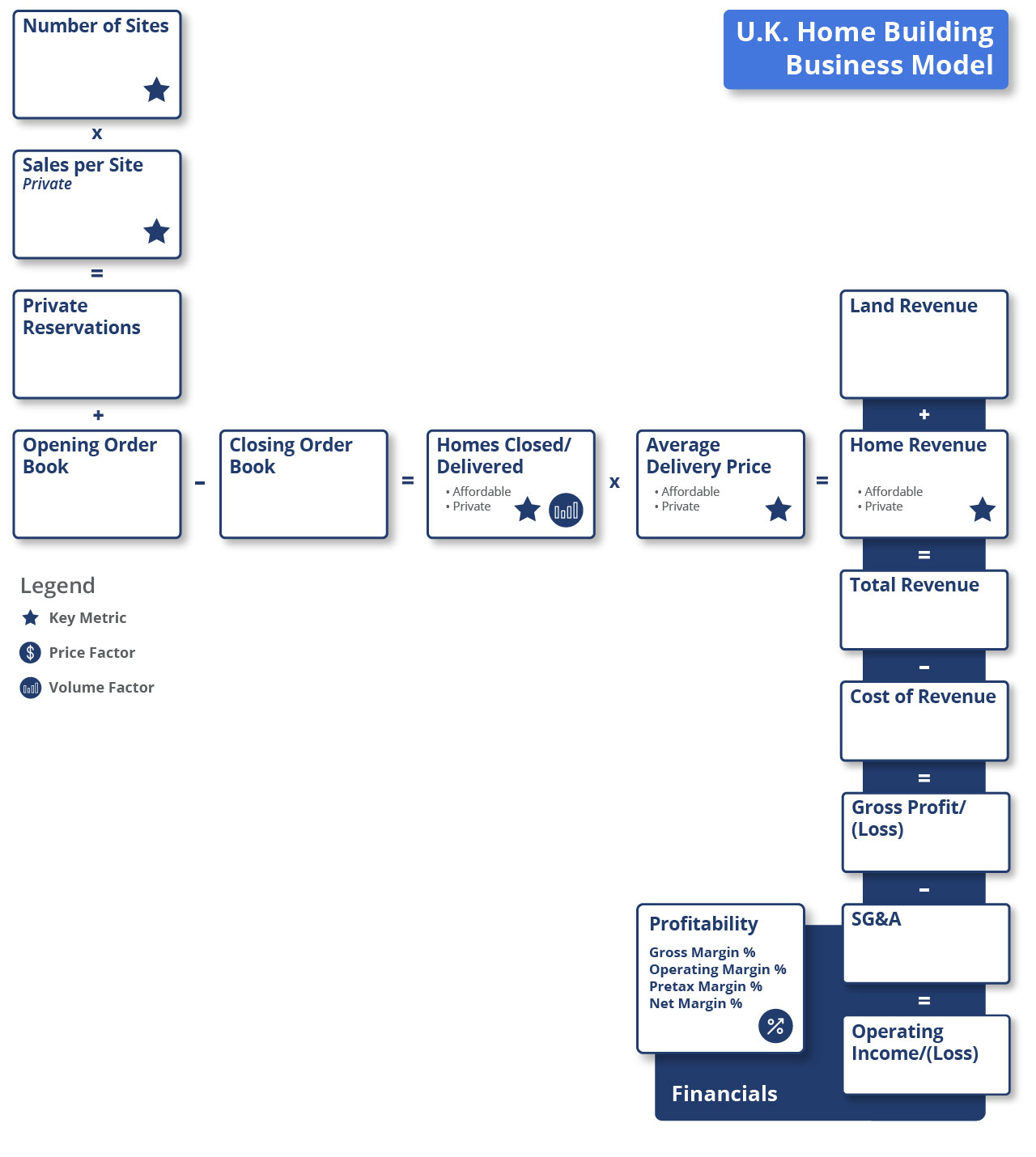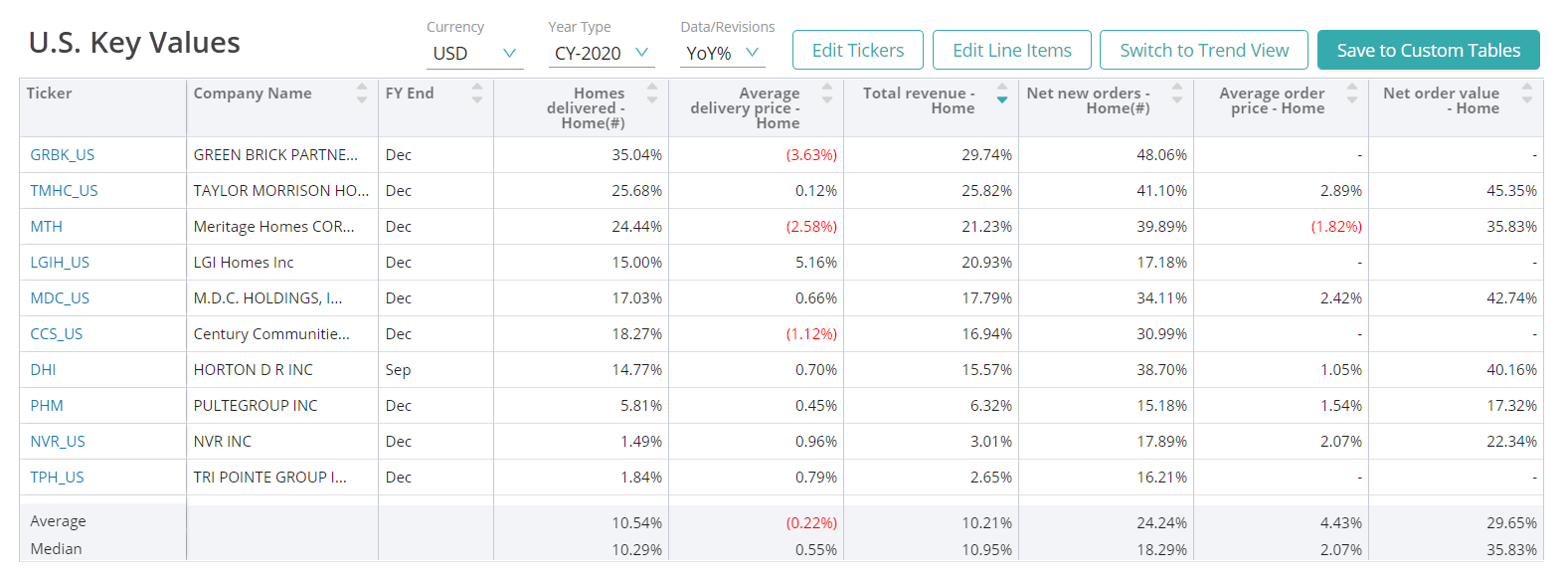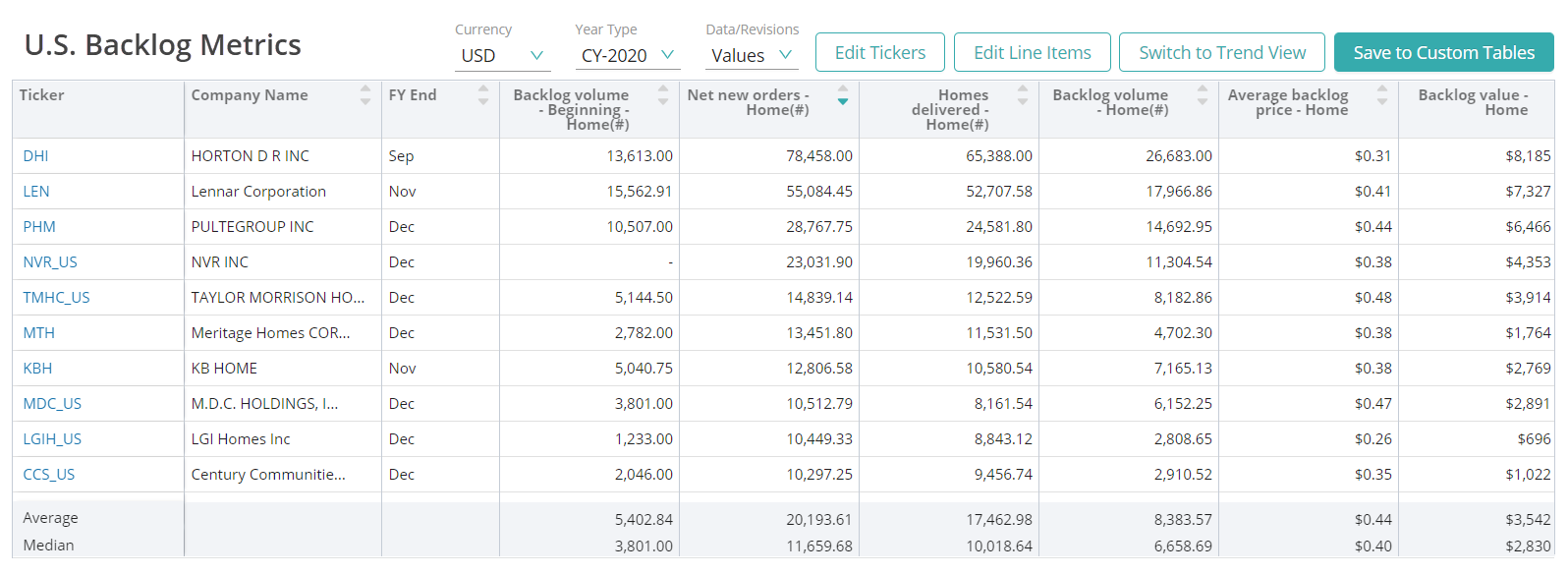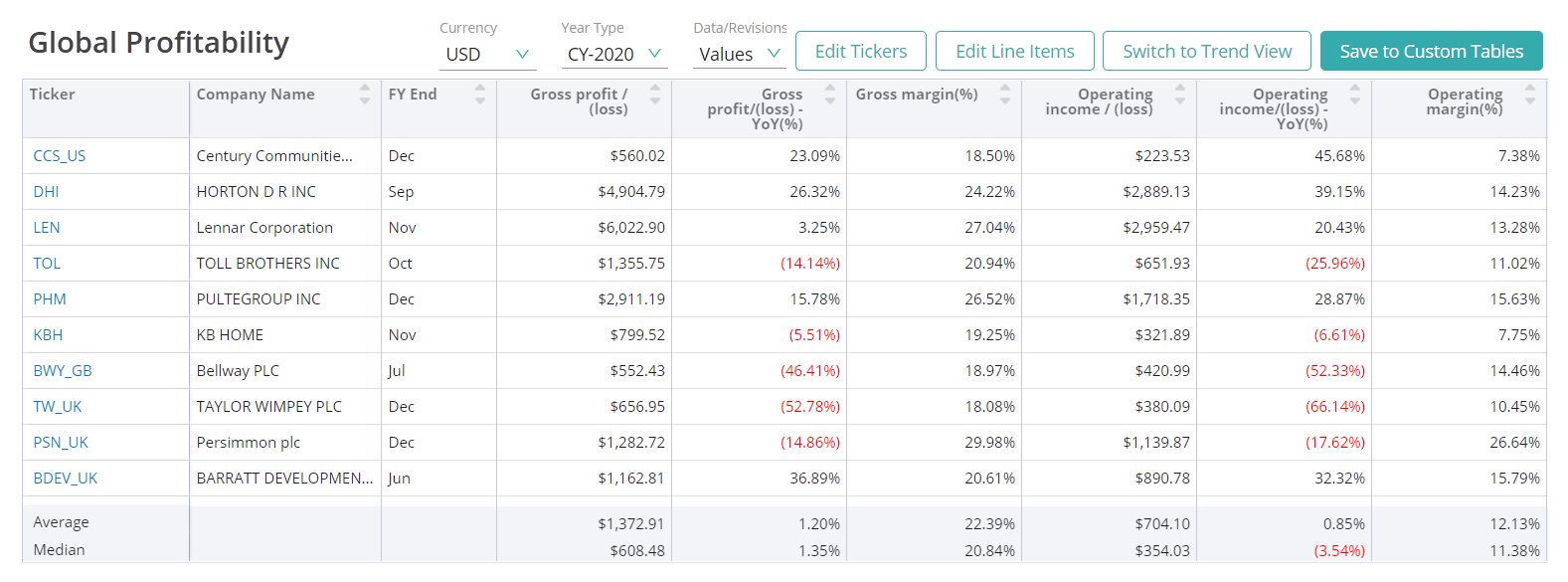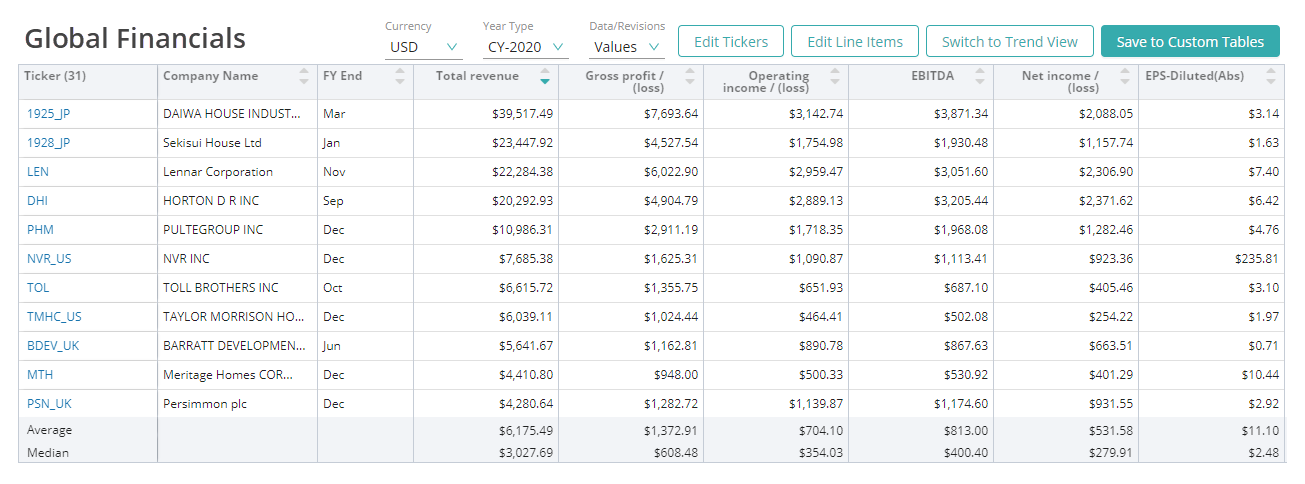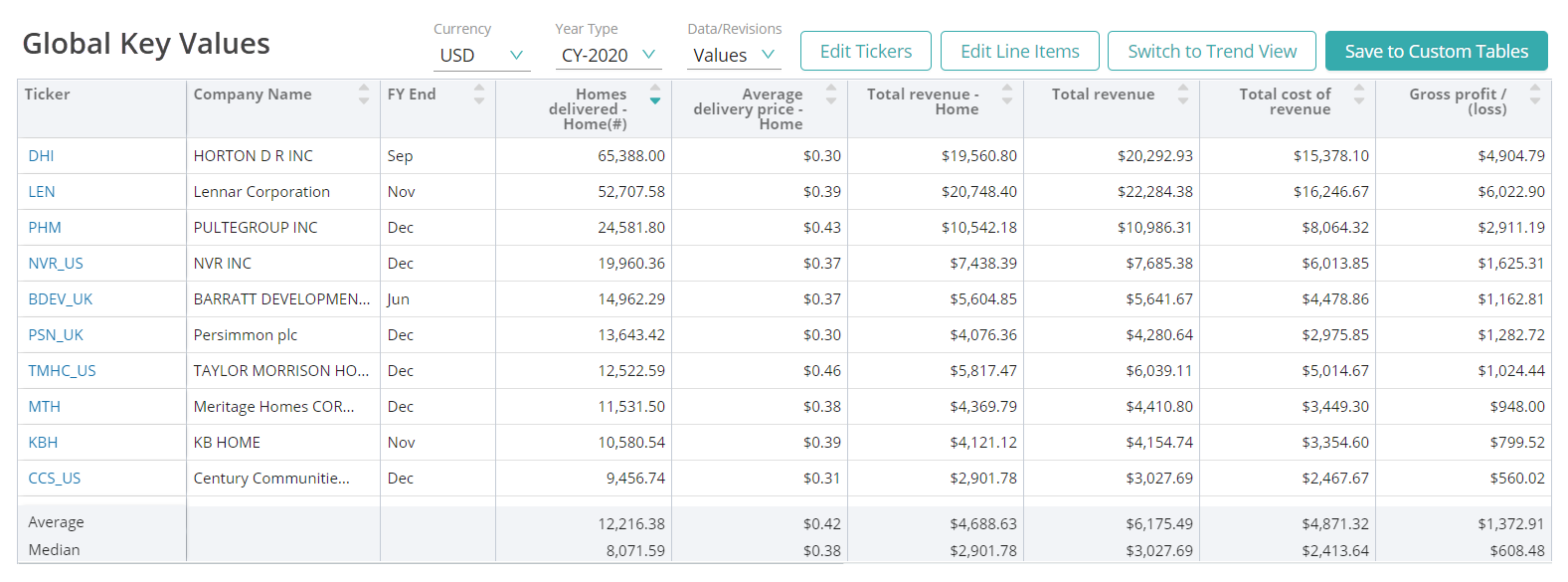Home is defined as a single-family residence and includes attached and detached single-family residential homes.
Key performance indicators (KPIs) are the most important business metrics for a particular industry. When understanding market expectations for home building, whether at a company or industry level, here are some of the home building KPIs to consider:
Visible Alpha’s Standardized Industry Metrics
To understand market expectations for the home building industry, a key information source is sell-side analyst estimate and consensus forecast data. The buy side, sell side and public companies leverage this type of data to conduct peer analysis, a type of analysis conducted by professional analysts that involves comparing standardized metrics of one company with those of similar companies. Because companies report metrics differently – and sometimes report on different metrics altogether – standardizing the key metrics for each company can be a cumbersome process.
Visible Alpha Insights includes analyst data, company data and industry data at level of granularity unparalleled in the market. Our industry data – Standardized Industry Metrics – enables market participants to quantify and compare market expectations for companies across 150+ industries.
Data as of January 2023
Industry KPI Terms & Definitions
Visible Alpha offers an innovative, integrated experience through real-time, granular consensus estimates and historical data created directly from the world’s leading equity analysts. Using a subset of the below KPIs, this data can help investors hone in on the key drivers of companies to uncover investment opportunities. Learn More >
Home
Home is defined as a single-family residence and includes attached and detached single-family residential homes.
Absorption Rate Or Contracts Per Community
Absorption rate is the number of net new home orders divided by average sales locations. In the U.K., contracts per community are also known as sales per site.
Backlog
Backlog consists of homes sold under sales contracts not yet delivered to customers. U.K. home builders use the term “order book” instead of backlog.
Homes Closed or Delivered
Homes closed, or homes delivered, represents the homes delivered to the customers since the project opened.
Average Selling Price
Average selling price of the homes delivered, calculated as revenue divided by homes delivered.
Average Backlog Price
Average backlog price is derived using backlog volume divided by backlog value.
Average Order Price
Average order price using net new orders divided by order value
Backlog Conversion Rate
Backlog conversion rate represents the number of homes delivered/closed in a given period divided by the backlog at the beginning of the period. The majority of analysts use volume as the base when computing the backlog conversion rate. Alternatively, this can be calculated as realized revenue divided by the backlog.
Cancellation Rate
Cancellation rate of booked homes for the period can be derived as a number of canceled units by gross orders.
Net New Orders
Net new orders consist of homes sold under sales contracts minus the cancellation of homes booked for the period. U.K. home builders use the term “reservations” instead of net new orders.
Community or Sites
A community or site is a single development in which new homes are constructed as part of an integrated plan. Community count denotes the number of communities that have opened for home sales. In the U.K., home builders use the term “sites” rather than communities.
Housing Associations
Housing associations in England are independent societies, bodies of trustees or companies established to provide low-cost social housing on a non-profit-making basis.
Private Housing
The private housing sector or non-social housing sector (i.e., owner-occupied household space and those rented privately), including those that go with a job or business and those not owned by housing associations.
Affordable or Social Housing
Affordable housing or social housing is social rented, affordable rented and intermediate housing for eligible households, which is determined by local incomes and local house prices. Local authorities and private registered providers own social rented housing.
Download this guide as an ebook today:
Guide to Home Building KPIs for Investment Professionals
This guide highlights the key performance indicators for the home building industry and where investors should look to find an investment edge, including:
- Home Building Industry Business Model & Diagram
- Key Home Building Metrics PLUS Visible Alpha’s Standardized Industry Metrics
- Available Comp Tables
- Industry KPI Terms & Definitions
